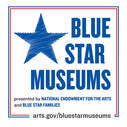Giovanni Battista Nicolosi
Mexicum
Rome 1671
Mexicum
Rome 1671
This two part map was printed originally in Rome in 1660 and again, with many more place-names in 1671. The Rio Grande, represented here as the R. Escondido, is for the first time shown correctly, flowing from New Mexico southeast into the Gulf of Mexico. Santa Fe (designated here as S. de F.), the Spanish colonial capital of Mexico del Norte, is shown more or less in the correct position to the east of the Moqui (the early Spanish designation for the Hopi), the Cuni (Zuni), and Acoma pueblos.
California is, of course, shown an an island with the now-familiar place-names such as C. Mendocino, Pt. de S. Francisco, and C. Blanco shown more or less in their correct positions. Interestingly, Quivira appears in three different locations and Cibola in two, as if the cartographer did not want to take any chances of being incorrect. To the north of the mainland, the R. de S. Francisco ends abruptly. To the north of California, Anian is vaguely suggested and with it the possibility that the Strait of Anian (although not shown) might connect with the passage of water flowing southwest from the Arctic Sea. This map, although conveying much contemporary information, seems to encourage viewers to use their imaginations, particularly with respect to the only vaguely known portions of the west coast of the continent.
NEXT MAP
PREVIOUS MAP
California is, of course, shown an an island with the now-familiar place-names such as C. Mendocino, Pt. de S. Francisco, and C. Blanco shown more or less in their correct positions. Interestingly, Quivira appears in three different locations and Cibola in two, as if the cartographer did not want to take any chances of being incorrect. To the north of the mainland, the R. de S. Francisco ends abruptly. To the north of California, Anian is vaguely suggested and with it the possibility that the Strait of Anian (although not shown) might connect with the passage of water flowing southwest from the Arctic Sea. This map, although conveying much contemporary information, seems to encourage viewers to use their imaginations, particularly with respect to the only vaguely known portions of the west coast of the continent.
NEXT MAP
PREVIOUS MAP






